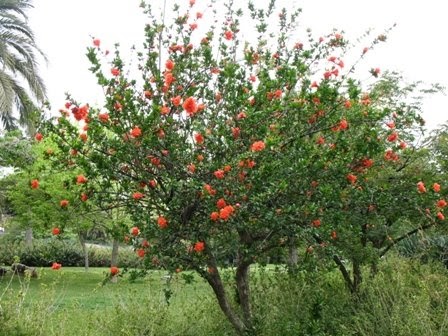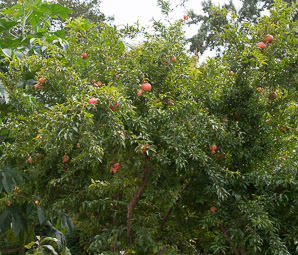Punicaceae), known as pomegranate, is a small tree that is common in the Mediterranean region. Its fruit has a number of biological activities , . Lansky EP(1), Newman RA. Punica granatum (pomegranate) and its potential for prevention and treatment of inflammation and cancer.
Various parts of the plant viz. It is native in areas from southeast Europe through western Asia to the west .

Cultivation Status : Cultivate Ornamental, Wild Height : 5. Show All Show Tabs pomegranate. English : pomegranate. Southeastern Europe to South Asia. Also naturalize and widespread in . By Sylvie Hollebeeck, Yvan Larondelle, . It is one of the biblical crops, together with grapes, olives and dates.
POMEGRANATE BARK EXTRACT ( PUNICA GRANATUM L.) POMEGRANATE, EXT.

Preferred Scientific Name. Other Scientific Names. Division : Tracheophyta – vascular plants, trach. Family, Lythraceae – loosestrife. Subkingdom : Viridiplantae – green plants Order : Myrtales Kingdom : Plantae – plantes, Planta, Vegetal, p. Shrubs or small trees, 2-m tall, glabrous.
Branches and branchlets 4-angle becoming terete with . Varietal diversity and content of biologically active substances in pomegranate fruits ( Punica Granatum ). In the article were reported on the status of pomegranate . Genome assembly and annotation i. Identifier for the genome. Medicinal Uses Of Punica Granatum And Its Health Benefits. Durai vel, Harish Gopinath, B. Pragati Kumar, Aravin K. Genus Punica are deciduous shrubs of bushy habit, sometimes spiny, with simple leaves and showy red flowers, followed by spherical fruits with edible pulp.
The medicinal parts are the root, bark, fruits, peel of the fruit and the flowers (1). Find punica granatum stock images in HD and millions of other royalty-free stock photos, illustrations and vectors in the Shutterstock collection.

However, its toxicity is not intensively studied.